by Michael | Jul 24, 2017 | Blog
I am being asked more and more often about naming ceremonies and what they consist of, so I thought a blog answering that question might be in order.
Why a Naming ceremony?
A few common reasons for arranging a civil ceremony are:
- Religious elements are wanted, but the couple are mixed-faith
- The couple want to mark the rite of passage, but preferably not (or barely) religiously
- A couple are marrying, and bringing a child or children into the relationship. They want to formally symbolise their integration into one family.
What does a Naming ceremony consist of?
Because I specialise in bespoke ceremonies, I can’t give a one-size-suits-all answer. As we have already seen, these ceremonies may be religious or secular, and can be held indoors or out. Thus rituals will be more or less appropriate depending on the circumstances and tone.
Participation
Naming ceremonies tend to be more relaxed (although some of the content may be quite serious), and there’s usually a greater element of participation than with many other ceremonies.
Here, the parents may want to take an active role. They may choose and read poems (of course, the celebrant can help them with choices). They may also read out promises to the child. Again, they write these themselves or use a bit of help.
Godparents and/or grandparents may be invited to play a role. They may read a text about what it means to be a god/grandparent, for example.
Ritual
As well as music, which is another option to be considered, you could include some rituals. Unity candle lighting is deservedly popular. This doesn’t always work outdoors (for obvious reasons!), and health and safety does have to be taken into account inside! But it’s especially good if two families (with children) are combining.
Another possibility for a baby, is to sprinkle her with rose petals (different colours representing desired qualities). Again, this invites participation.
The ceremony might end with a communal blessing and a baby-specific blessing (not necessarily religious).
I hope this gives a flavour of the “typical” ceremony, and will whet a few appetites! I’ll be very happy to help out, if you want to know more.
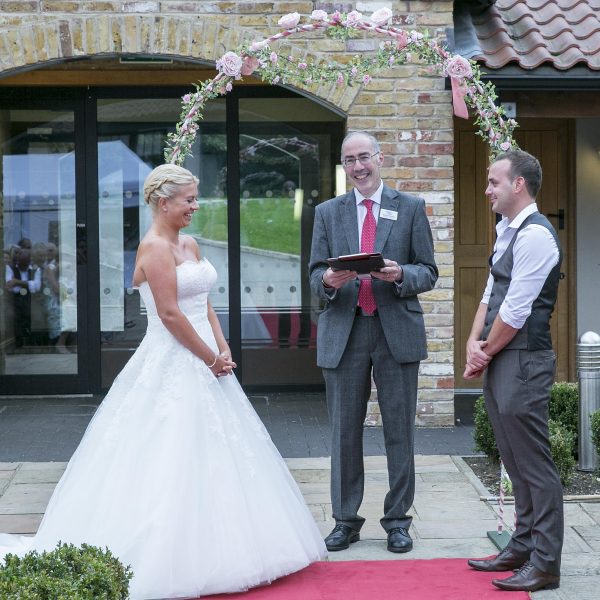
by Michael | Jun 20, 2017 | Blog
Your wedding ceremony should be the most important day of your life. Of course, you want to get it right. But what does it mean, to “get it right”?
There’s a lot of choices out there – possibly, more than you realise.
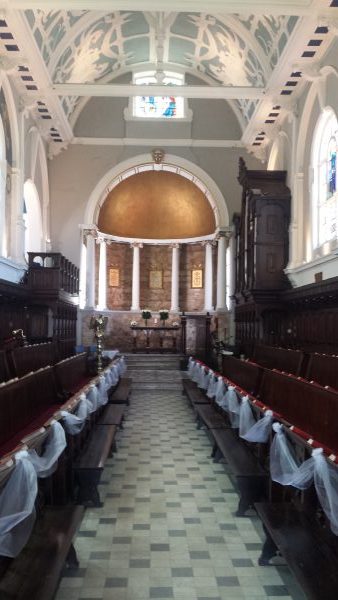
Religious, or not?
In many cases, the first decision you make together is whether or not you want a full religious ceremony. If not, do you want the other extreme? Of course, you can have a fully secular one, but maybe you prefer a mixture?
Anglican
If your choice is a Church of England ceremony, it’s easier if it’s your local church, but you can choose another one. Normally, the Vicar will be able to take you through everything. There’s no need to visit a Register Office either, as everything can be done in one ceremony. The cost of this starts at £456.
Church of Scotland
Church of Scotland ceremonies can take place anywhere and at any time (as long as your minister is in agreement). You don’t need to be a Scottish resident – but you do need to give between 15 days and three months’ notice at the Register Office.
Roman Catholic
You’ll need to take your baptism and confirmation certificates along to your priest at least six months before you wish to marry. If one of you hasn’t been baptised, your priest’s permission will be needed. You’ll be expected to attend marriage preparation classes, and to attend Mass for six weeks before your wedding day. Additionally, you need to go to your local Register Office to give notice and obtain your marriage licence.
Jewish
You will need to apply to the religious authorities and to the local Register Office. A religious ceremony will normally take place in a synagogue, but the rabbi may agree to conduct it elsewhere.
Secular
If you’re certain you want no religion, then you can opt for a humanist wedding. This will not be recognised in law, so you will still need to attend a Register Office ceremony beforehand. You can hold the humanist wedding wherever you wish, and can write your own vows and hire a humanist celebrant.
Just remember, that in a humanist ceremony, there should be no mention at all of God or even religious references, so if that’s a bit too extreme, you may want to consider a civil ceremony.
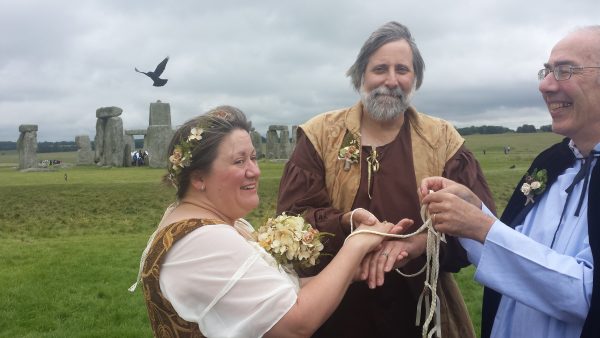 Civil Ceremony
Civil Ceremony
Like the humanist wedding, a civil wedding has no legal validity. It is simply a ceremony that is put together specially, usually by a professional civil celebrant. It should create a fabulous atmosphere and may well reflect the personalities and beliefs of the couple.
You can hold this wherever you like. If it’s in a property licensed for marriages, the registrars can be booked to come out (at an extra charge) and conduct the legal ceremony there. The civil ceremony can follow on straight afterwards. Otherwise, if not in licensed premises, you both need to go to the Register Office beforehand, with two witnesses. (This costs £35.)
Register Office
In addition to the celebrant charge, you will have to pay the registrars for the legal words to be pronounced. To organise this in the first case, go to the local Register Office to give notice. (If you’re not marrying locally, you’ll have to contact that particular Register Office to ensure they have somebody available on your chosen day.)
You’ll need ID, proof of address and nationality, any previous marriage documents and details of your venue. Once issued, the notice will be displayed for 15 days before you can legally marry. Your marriage licence is valid for a year.
You can find your civil celebrant via recommendation, Google – or at this website!
So I hope you see that there are other routes open to you than full religious or humanist. As long as the legal words are said and witnessed properly, everything else can be as original and personalised as you choose. You really can have the day of your dreams!
by Michael | Dec 13, 2016 | Blog
So you’ve got engaged – congratulations! But don’t sit back! It’s time to start the wedding count down.
There’s more to do than you’ll expect. To keep it as stress-free as possible, I recommend that you start planning at least a year before the event.
If you put things off, you’ll soon find that you’re under pressure – and possibly making the wrong decisions.
Don’t be impulsive, although you should go with your heart to quite a degree. Wherever possible, follow recommendations. Visit suppliers and certainly the venue, so you can get a feel for them. Take the opportunity to ask questions.
Here are some of the things to do:
As early as possible
- Fix your budget
- Decide on the type of ceremony you want (full religious; totally secular (Register Office); mainly religious, non-religious or part-religious (Civil Celebrant))
- Book your venue
- Book your florist, cakemaker, transport, caterers, musicians, entertainers, photographer/videographer
- Book your minister, registrar and, of course, civil celebrant.
- Draft a guest list
- Choose your team (bridesmaids, ushers and Best Man)
- Start looking for your wedding dress
- Organise wedding insurance
Six months before
- Buy your wedding rings
- Buy your bridal lingerie and shoes (and wear them for dress fittings)
- Book a hairdresser and make-up artist
- Choose outfits for the groom, best man and ushers
- Order your stationery
- Book your honeymoon – check passports are valid. Do you need any vaccinations?
Three months before
- Confirm ceremony details (including [celebrant] order of service and wedding music )
- Send out invitations and gift list
- Discuss menu and drinks with caterer
- Have initial dress fitting
- Buy gifts for Best Man, ushers and bridesmaids
- Plan your hen/stag parties
My next blog will take you through the month before your wedding, so don’t miss it! However, if you can’t wait, why not e-mail me and I’ll gladly send you my Wedding Countdown Checklist, which will tell you everything in one document?

by Michael | Nov 8, 2016 | Blog
I often get asked what a handfasting is.
Do you remember when Prince William married Kate Middleton? Although the ceremony was religious, they briefly incorporated a ritual that resembled a handfasting. The Archbishop draped material over the clasped hands of the couple.
So much else was going on that it attracted little attention. However, a handfasting is technically pagan, and often plays a central role in pagan ceremonies.
Alternatively, it is often chosen as an “add-on” in a traditional wedding.
A growing number of brides and grooms seem intrigued by this and are choosing to incorporate it in their wedding.
And of course it can be included in a Vow Renewal too.
History
Handfastings began as a marriage rite in the Middle Ages. When peasants married, they might have been unable to afford a clergyman’s fee to hear their vows or a ring to signify their love. The ritual of handfasting became a popular alternative.
A cord was wrapped round the wrists of the couple and left on them until their union was consummated. It would usually be kept as a tangible reminder and proof of their commitment and love.
It has given us the expression “tying the knot”.
Present-day Ceremony
Nowadays, the cord symbolises the pair’s mutual love. The way a handfasting can be slipped in is as follows, although this is only a suggestion, and it may be different for a pagan ceremony.
- Walking down the aisle to be given away by the father
- Officiant welcome
- Meaning of love (possibly from a religious slant, if that’s wanted)
- Here, or after the Handfasting, or at both times, a song or a reading/poem
- Handfasting
- Possibly, a Unity Candle or Sand Ceremony or Chalice ritual
- Exchange of Rings/Vows
- Jumping the Broom (not actually pagan, but deriving from wedding ceremonies conducted by slaves in the American South), now used to symbolise sweeping in the new as a new home is created
- Concluding words
Thoughts
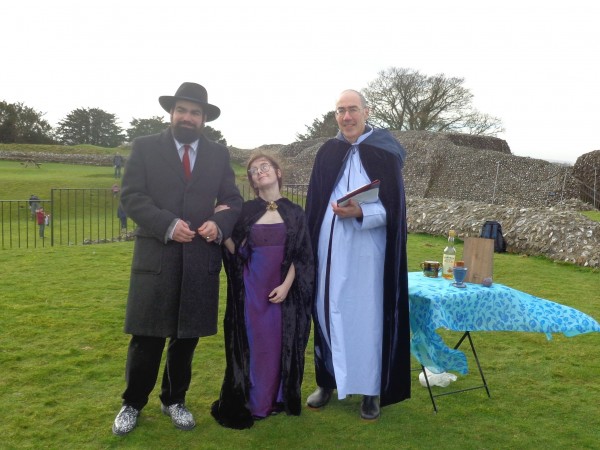
I conducted a memorable handfasting at an Iron Age Fort in Wiltshire. The ceremony was part-pagan, part-Jewish with rituals from both sides. (Of course, I made sure everyone could understand by explaining the symbolism.)
It was a totally unique occasion – absolutely perfect for the couple and – clearly – for the guests too.
I shared a wonderful experience with an American couple at Stonehenge at the time of the solstice – and that was quite unforgettable! A photo from that day is my featured image.
In order to add extra sparkle and personality to your big day, do find out about a handfasting. I shall be delighted to tell you more.
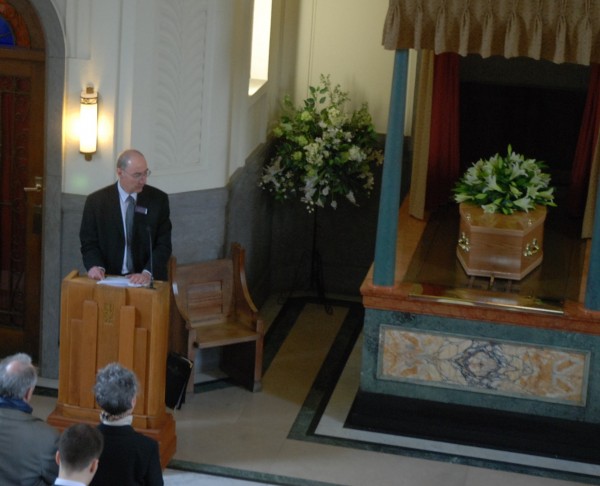
by Michael | May 23, 2016 | Blog
The best that can usually be said about a death is that “it was a release” or “X had a wonderful death”. (One example of the latter in my experience was a nonagenarian who died on the beach in Tenerife by the side of his girl-friend!)
Be that as it may, a funeral is normally a time when you expect the family and friends to rally round. Mind you, as a civil celebrant, I’ve known some exceptions.
In one case, one sister decided not to forward my draft funeral to her brother (so that he would have no input)! In another instance, one brother simply vetoed whatever his siblings proposed. (We only got that funeral approved the afternoon before the ceremony!) And one son never even showed up to his mother’s funeral (as he had seen the will and knew he would be inheriting …!)
However, in the vast majority of cases, there is a sympathetic coming-together of folk. Sometimes people come from a very long way to show solidarity.
If it’s not to be a set religious ceremony, the closest kin of the deceased are normally invited to contribute to the planning of the service. The civil celebrant can explain what is required and offer guidance, especially as the family member(s) may be feeling very vulnerable and confused (although there is a wide range of emotions they may be experiencing).
A lot of people find discussing the eulogy surprisingly enjoyable. It’s certainly an outlet for releasing a few feelings, and not everything that is mentioned needs to be included in the final reckoning. However, trawling up those stories and memories can be very therapeutic.
The service itself is likely to be a difficult time for many people (and shows of emotion – or lack of it – can often take people by surprise). However, there is usually comfort to be found from being surrounded by sympathetic relatives and friends.
![DSCF0126[2]](https://vowsthatwow.co.uk/wp-content/uploads/2016/01/DSCF01262.jpg)
A reception (or even a wake) is common, and that can take various forms. It may just be some sandwiches and drinks (whether alcoholic or otherwise); however, there may be mementos of the deceased (often photo albums and the like). The deceased will be a good starting-point for conversation (so everybody has one thing in common, at least). Once the channels of communication are open, the reception can turn into a genuine social event.
Circumstances dictate that some deaths are far harder to accept than others, but those who attend a funeral often find that the whole occasion has been cathartic – and , in a way, even enjoyable.
So, much good frequently comes from what is a sad rite of passage.



 Civil Ceremony
Civil Ceremony

![DSCF0126[2]](https://vowsthatwow.co.uk/wp-content/uploads/2016/01/DSCF01262.jpg)